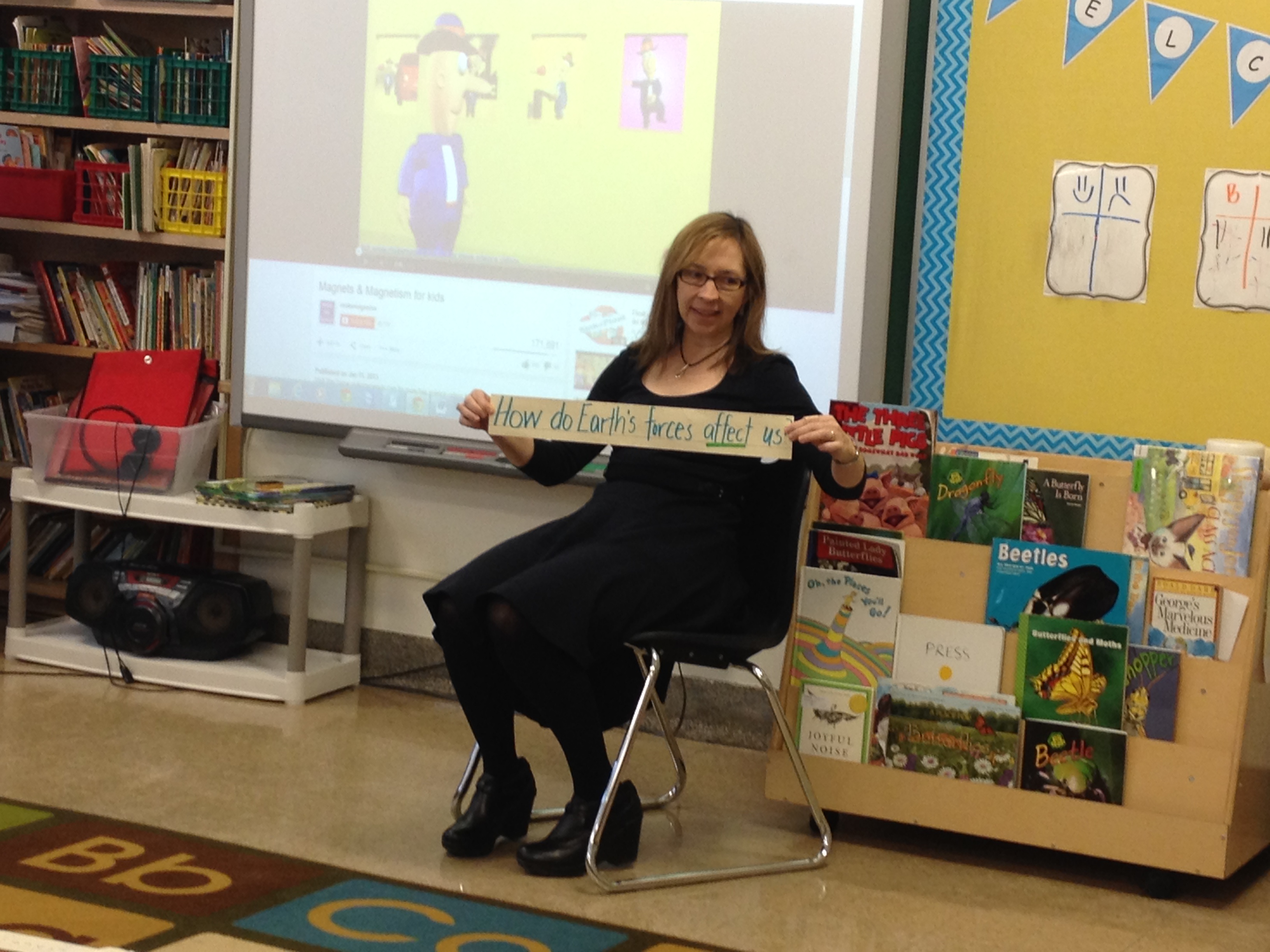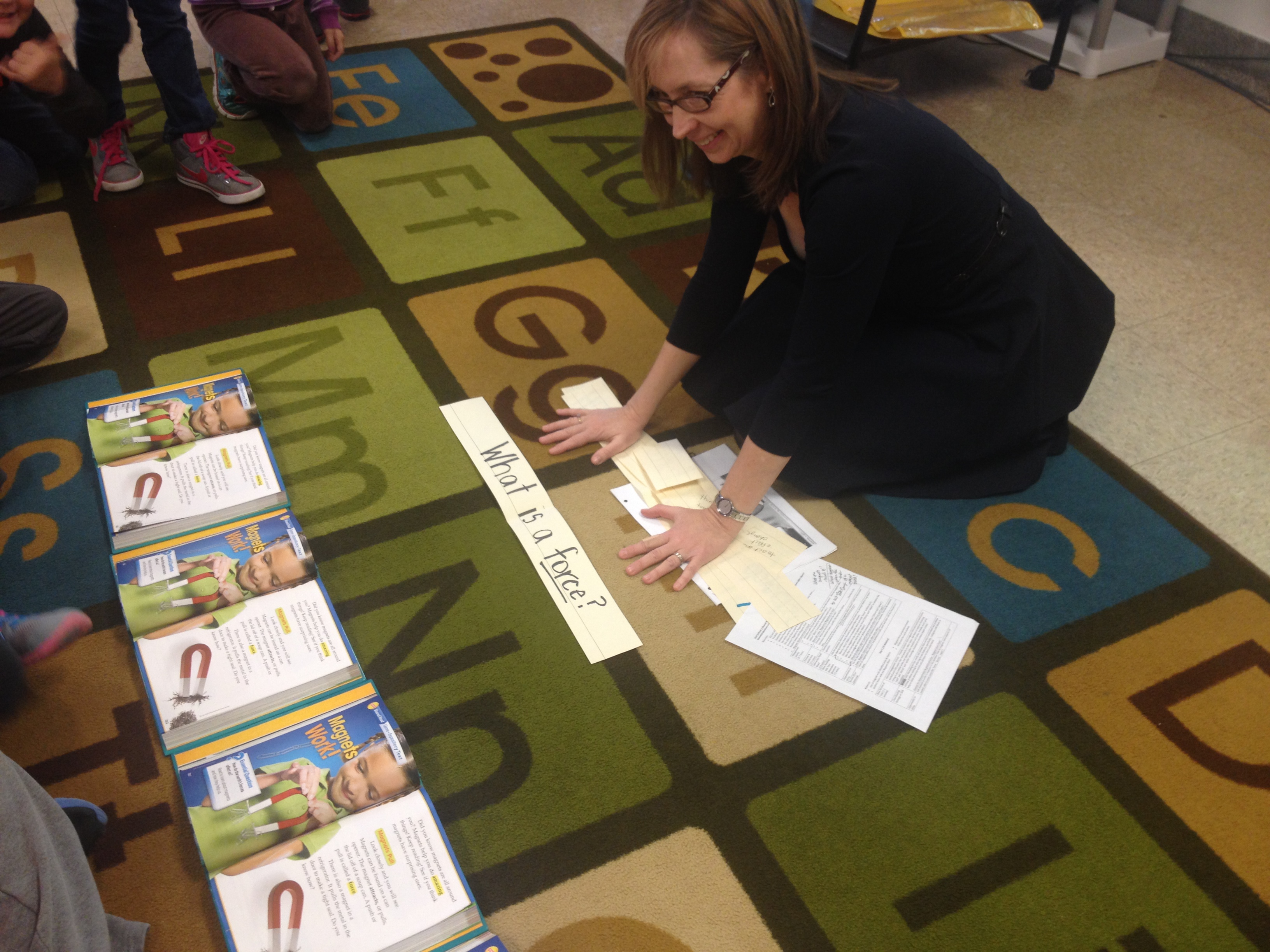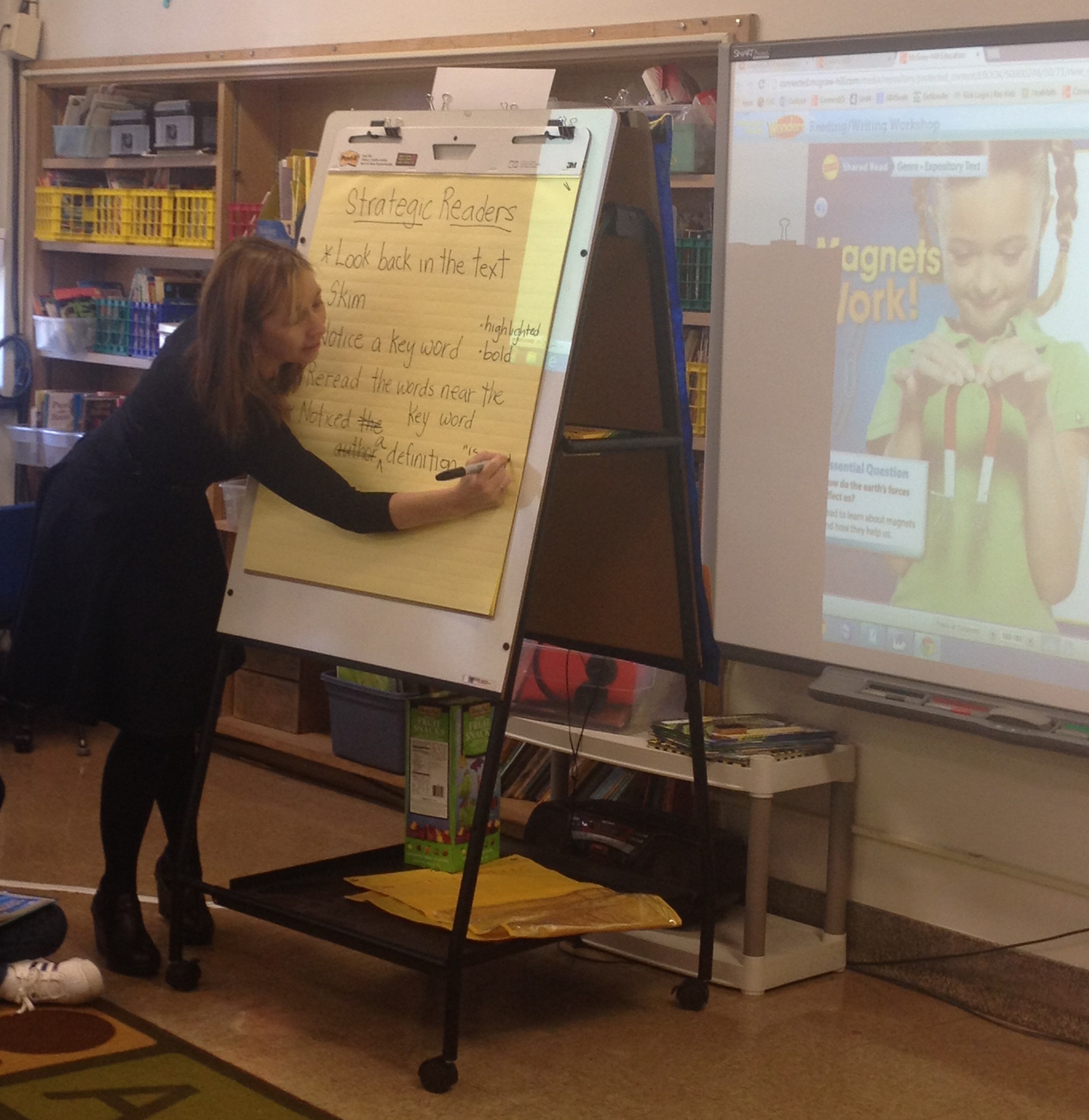Recently I was asked to teach a lesson to second grade students with an informational text on magnets. As I read through the text, I began thinking about how many of the students I’d be working with may not have had many language and hands-on experiences with magnets or magnetism or the concept of force, a push or pull. Many authors of informational articles assume some background knowledge of their readers and research is clear that the more background knowledge a reader has, the more likely they are to comprehend the content in the text. Our colleagues in the field who say we level the playing field by NOT not addressing background knowledge with students and just referring to the text are misguided. A reader cannot help but tap background knowledge – it’s instinctual.
The trick is not to get lost in building background knowledge and never get to the text or to build so much background knowledge, there is no content to grapple with in the text.
Also, it’s essential that whatever background knowledge experiences I provide are specifically targeted at or aligned with supporting understanding of the content in the text. I have to be more strategic that saying, “Have you ever played with magnets?”
Here’s what I did before teaching:
- I read the article on magnets carefully in advance and thought about the author’s key points. The article was focused on how magnets work – including examples of magnets in the household and an explanation of how the north and south poles of a magnet function (using a toy train with magnets on each end as an example).
- I found a five minute video that included the same language (academic vocabulary) and concepts the article included – https://www.youtube.com/watch?v=eYSG5aeTy-Y. I REJECTED videos that were stupid songs about magnets or that did not include the right content. I prefer 3 minutes or less in a video – but this was fine. I searched and located this video in about ten minutes.
- I picked up magnets with marked north and south poles at my local teacher store (35 cents a piece). I would end up using these in small group lessons versus for the initial whole group lesson.
- I planned for a 20-30 minute shared reading lesson with the whole group and then take the text into small group guided reading with groups–if at an appropriate instructional level for the group.
Here’s what I tried and noticed during the whole group lesson – each of these approaches served to build background knowledge or access to the content in the text in some way –
- I introduced the focus question for the lesson – How do magnets affect objects? The question was written on a sentence strip and posted for all students to view. I briefly defined “affect” and “objects.”

- I showed the video – stating the objective for viewing was to think about how magnets affect objects.
- I asked the students to turn and talk, briefly, about what they learned from the video (a text)–and reminded them that they should refer to the video versus their personal experience. I met with a few pairs, coached them to use the language of magnets and then asked them to share out when we regrouped.
- I engaged the students in shared reading of the first three pages of the text – pausing for them to fill in particular words. Many of the words I paused at were domain specific words (they’d heard in the video and that they’d heard me read early in the shared text). I wanted them to hear and feel themselves saying like magnet, north, south, pole, force, push, pull.
I ended the lesson by asking them to work with a partner to answer a text-dependent question – What is a force? Again, I conferred with pairs, coaching heavily and asked students I’d conferred with to share out when we regrouped. After sharing out the answer from the text, we made a list of how we were strategic in finding the answer.


What I noticed:
- OH, THE LIGHT IN THEIR EYES when they saw words in the text that they’d heard in the video!!!! This spurred engagement, a willingness to tackle a complex text!
- OH, THE ENTHUSIASM IN THEIR VOICES when I would pause during shared reading and they would read content words that they normally would grapple with understanding initially given no opportunity to activate or build background knowledge.
- OH, HOW THEY JUMPED INTO LOOKING FOR THE ANSWER to the text-dependent question. Was this because I’d already helped them access the content in the text without explicitly teaching the concepts?
- OH, HOW THEY WANTED TO SHARE when I asked them to turn and talk with a partner. Okay…not everybody, but because of the support I’d provided, the students seem to access the content in the text more easily.
Did everyone walk away fully understanding the force of magnets? No. Did most students walk away having learned a bit about magnets? Yes. And isn’t that our goal when teaching with informational texts – to learn content? Yes.
Ideally this lesson would be part of a content area unit on magnetism or Earth’s forces.
How I’d follow up –
- Take this text to small group instruction with students — if appropriate. For second grade students who are at a pre-A, emergent, early level of reading this would not be appropriate. For students who are nearly at the transitional stage or in transitional stage of reading – I gave it a try.
- Use this text again for another 1-2 shared reading lessons (20 minutes) with the whole group. On day two, I’d pull out the magnets I bought and let the students explore the properties of magnets while also using the language of magnets – “The magnet is attracting the X.” and “The ends of the magnets are repelling.” Then I’d offer another text-dependent question for student pairs to answer.
More on how I took this shared reading experience to small group instruction in the next entry.
Please know you are in my thoughts as you help students grapple with complex informational texts!
S
